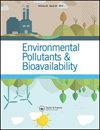改性滑石粉去除废水中亚甲基蓝的吸附特性
Q3 Chemical Engineering
引用次数: 7
摘要
摘要采用物理纯化和50% (w/w) HNO3酸活化法制备改性滑石粉,采用x射线衍射、扫描电镜和能谱分析对改性滑石粉进行了表征。将改性滑石粉用于废水中亚甲基蓝的吸附。考察了吸附接触时间、pH、吸附温度、初始质量浓度和固含量。用Weber-Morris方程描述了吸附机理。实验结果表明,在pH大于7的条件下,提高初始染料浓度和温度均能提高对亚甲基蓝的吸附能力,改性滑石粉对亚甲基蓝的吸附能力优于初始未改性滑石粉。改性工艺提高了滑石粉的纯度。改性滑石粉对亚甲基蓝的吸附动力学符合拟二阶模型。实验结果表明,滑石粉可以作为一种有效的吸附剂用于纺织废水的脱除。本文章由计算机程序翻译,如有差异,请以英文原文为准。
Adsorptive characteristics of modified talcum powder in removing methylene blue from wastewater
Abstract Modified talcum powder prepared by physical purification and 50% (w/w) HNO3 acid activation was characterised by X-ray diffraction, scanning electron microscopy and energy dispersive spectrometry. The modified talcum powder was used for the methylene blue adsorption in wastewater. Adsorption contact time, pH, adsorption temperature, initial mass concentration, and solid content were investigated. The adsorption mechanism was described by the Weber–Morris equation. Experimental results showed that above pH 7, increasing the initial dye concentration and the temperature improved the adsorption, and also that the adsorption capacity of modified talcum powder for methylene blue was superior to the initial unmodofied talcum powder. The modification processes improved the talcum powder purity. The kinetics of the sorption of methylene blue on the modified talcum powder fitted well to the pseudo-second-order model. From these experimental results, it is concluded that the talcum powder could be employed as an efficient adsorbent for the removal of textile dyes from effluents.
求助全文
通过发布文献求助,成功后即可免费获取论文全文。
去求助
来源期刊
CiteScore
1.62
自引率
0.00%
发文量
0
审稿时长
1 months
期刊介绍:
Chemical Speciation & Bioavailability ( CS&B) is a scholarly, peer-reviewed forum for insights on the chemical aspects of occurrence, distribution, transport, transformation, transfer, fate, and effects of substances in the environment and biota, and their impacts on the uptake of the substances by living organisms. Substances of interests include both beneficial and toxic ones, especially nutrients, heavy metals, persistent organic pollutants, and emerging contaminants, such as engineered nanomaterials, as well as pharmaceuticals and personal-care products as pollutants. It is the aim of this Journal to develop an international community of experienced colleagues to promote the research, discussion, review, and spread of information on chemical speciation and bioavailability, which is a topic of interest to researchers in many disciplines, including environmental, chemical, biological, food, medical, toxicology, and health sciences.
Key themes in the scope of the Journal include, but are not limited to, the following “6Ms”:
Methods for speciation analysis and the evaluation of bioavailability, especially the development, validation, and application of novel methods and techniques.
Media that sustain the processes of release, distribution, transformation, and transfer of chemical speciation; of particular interest are emerging contaminants, such as engineered nanomaterials, pharmaceuticals, and personal-care products.
Mobility of substance species in environment and biota, either spatially or temporally.
Matters that influence the chemical speciation and bioavailability, mainly environmentally relevant conditions.
Mechanisms that govern the transport, transformation, transfer, and fate of chemical speciation in the environment, and the biouptake of substances.
Models for the simulation of chemical speciation and bioavailability, and for the prediction of toxicity.
Chemical Speciation & Bioavailability is a fully open access journal. This means all submitted articles will, if accepted, be available for anyone to read, anywhere, at any time. immediately on publication. There are no charges for submission to this journal.

 求助内容:
求助内容: 应助结果提醒方式:
应助结果提醒方式:


